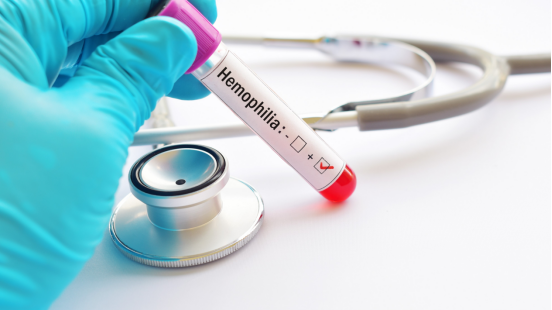Living with hemophilia presents numerous challenges, but with adequate knowledge and robust support, managing this condition can become a more achievable task. Hemophilia is a rare bleeding disorder characterized by the blood's inability to clot correctly, resulting in extended periods of bleeding from even minor wounds or injuries.

Identifying Hemophilia Symptoms
Hemophilia manifests itself in a variety of ways and its symptoms largely depend on the severity of the condition in an individual. Commonly observed symptoms include frequent and sometimes uncontrollable nosebleeds, extended duration of bleeding from cuts or other minor injuries, and unexpected bleeding into the joints and muscles without clear provocation. People with hemophilia might also notice that they bruise far more easily, with even slight impacts resulting in large and deep bruises. In cases classified as severe, internal bleeding could occur, potentially leading to dire complications if immediate medical attention is not sought. It is of utmost importance to discern these symptoms early, as timely intervention can prevent unnecessary health complications and facilitate effective condition management.
Significance of Early Hemophilia Diagnosis
Early diagnosis of hemophilia is crucial in initiating effective treatment and management strategies. Infants with a familial history of the condition often undergo testing shortly after birth. Conversely, the diagnosis for others might only come to light following significant bleeding episodes triggered by minor incidents or surgical procedures. Blood tests that measure clotting factor levels remain the cornerstone for confirming a hemophilia diagnosis. Detecting the condition early allows healthcare providers to quickly implement strategies that mitigate the risk of severe bleeding episodes in patients.
Exploring Hemophilia Treatment Options
The treatment landscape for hemophilia focuses on the prevention and careful management of bleeding episodes. The cornerstone of hemophilia treatment is replacement therapy, which involves the infusion of the deficient clotting factor directly into the patient's bloodstream. This therapy can be administered regularly (known as prophylactic treatment) to preemptively avert bleeding, or it can be provided on-demand to address bleeding episodes as they arise. Medical advancements have led to the creation of longer-lasting clotting factors, which consequently reduce the frequency of necessary infusions.
Another exciting advancement in treatment is gene therapy, aimed at introducing correct versions of the faulty gene causing hemophilia. Although still within experimental phases, gene therapy harbors the potential to be a long-term remedy by empowering the body to generate its own clotting factor.
Adjusting to Life with Hemophilia
For individuals with hemophilia, daily living necessitates meticulous management to avert bleeding incidents. Avoidance of activities that carry a significant injury risk is advised, along with safety measures like the use of protective gear during any physical endeavors. Engaging regularly in exercise, particularly low-impact activities such as swimming and walking, is recommended as these activities strengthen muscles and joints, thereby reducing the risk of bleed
ing. Additionally, education and awareness are paramount. Both patients and their caregivers should cultivate a thorough understanding of the condition, how to respond to bleeding episodes, and maintain a readied first aid kit alongside a well-defined emergency plan, which can substantially aid in controlling unexpected bleeds effectively.
The Significance of Hemophilia Treatment Centers
Specialized treatment centers dedicated to hemophilia play an indispensable role in delivering comprehensive care tailored to individuals with this condition. These centers utilize a multidisciplinary approach by providing access to a team of healthcare professionals including hematologists and physical therapists skilled in hemophilia management. They ensure patients receive regular medical check-ups, preventive care, and round-the-clock emergency support, ultimately offering customized care addressing specific patient needs.
Psychological and Social Support Structures
Handling a chronic condition like hemophilia is demanding both physically and mentally, highlighting the criticality of psychological and social support services. Utilizing support groups and counseling services can significantly aid patients and their families in tackling the emotional stresses associated with the disorder. They offer an invaluable platform where individuals can share experiences and strategies for managing everyday life challenges.
Future Prospects and Research in Hemophilia
Ongoing research initiatives in hemophilia continue to foster hope for improved and potentially curative treatments. Progress in biotechnology and gene therapy presents encouraging prospects for more efficient and less invasive treatment alternatives. Staying informed about cutting-edge research developments and participating in clinical trials can provide patients with access to innovative therapies while contributing to the collective understanding of hemophilia.
Gaining insights into hemophilia, being able to identify its symptoms, and being aware of available treatment options are pivotal in effectively managing the condition. With early diagnosis, appropriate treatment, and a robust support network, individuals with hemophilia have the opportunity to live healthy and fulfilling lives. Continued medical research advancements promise even better management strategies and potential future cures.





